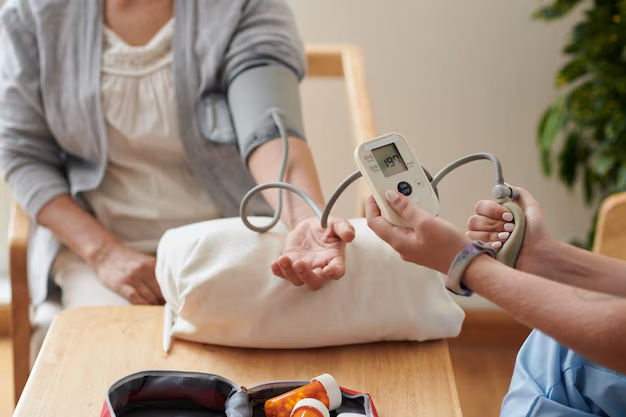Discover the Truth About Hypertension: What Blood Pressure Numbers Mean
Understanding blood pressure readings is crucial in maintaining heart health and preventing potential health issues. Hypertension, commonly known as high blood pressure, is a condition that can silently damage the body for years before symptoms become apparent. But how do we determine when blood pressure is considered hypertensive?
The blood pressure reading consists of two numbers. The first number, systolic pressure, measures the pressure in your arteries when the heart beats. The second number, diastolic pressure, gauges the pressure in your arteries when your heart rests between beats. Together, these numbers help classify blood pressure levels.
What Qualifies as Hypertension?
The American Heart Association (AHA) considers normal blood pressure to be below 120/80 mmHg. When these numbers consistently elevate, it may indicate hypertension. Here's a concise breakdown:
- Normal: Less than 120/80 mmHg
- Elevated: Systolic between 120-129 and diastolic less than 80
- Hypertension Stage 1: Systolic between 130-139 or diastolic between 80-89
- Hypertension Stage 2: Systolic at least 140 or diastolic at least 90
- Hypertensive crisis: Systolic over 180 and/or diastolic over 120, requiring immediate medical attention
Why Monitoring Blood Pressure Matters
High blood pressure puts extra strain on your heart and blood vessels, increasing the risk for severe health issues like heart disease, stroke, and kidney problems. Because hypertension often shows no symptoms, many people may not realize they are affected until significant damage has occurred. Routine monitoring and lifestyle changes can significantly reduce these risks.
The Road to Better Health
Managing hypertension doesn't just stop at monitoring. Here are some practical steps:
- Maintain a Healthy Diet: Focus on fruits, vegetables, and whole grains.
- Exercise Regularly: Aim for at least 150 minutes of moderate exercise per week.
- Limit Alcohol and Tobacco: Both can elevate blood pressure.
- Manage Stress: Practice relaxation techniques like meditation or deep-breathing exercises.
- Medication: Consult a healthcare provider if lifestyle changes aren't enough.
Financial Assistance and Resources
Chronic conditions like hypertension often require resources and consistent healthcare access. For many, this can become a financial burden. However, a variety of programs and assistance options can help manage these expenses. If you're seeking ways to alleviate the financial strain of managing high blood pressure, consider the following:
- Medicaid/Medicare Benefits: For low-income individuals and families, providing coverage and assistance for healthcare services.
- Pharmaceutical Assistance Programs: Offered by many drug companies to provide medications at reduced costs.
- Community Health Clinics: Provide low-cost health services, often on a sliding scale based on income.
- Wellness Programs: Many employers offer wellness initiatives that include health screenings and fitness incentives.
💡 Financial and Educational Opportunities
- 🩺 Medicaid/Medicare: Health coverage options available for qualifying individuals and families.
- 💊 Pharma Assistance: Significant savings on medications through various patient-assistance programs.
- 🏥 Community Clinics: Affordable healthcare services for all income levels.
- 📚 Grants for Health Education: Financial aid for educational programs focused on healthcare professions.
By understanding what constitutes hypertension and how to manage it effectively, you take a critical step toward a healthier life. Engaging with available financial and educational resources can further ease the pathway to managing your health effectively and affordably.

Related Topics
- a 66 Year Old Female With a History Of Hypertension
- Are Eggs Bad For Hypertension
- Are Eggs Good For Hypertension
- Are Endocrine Disorders Causing Hypertension Rare
- Can Adderall Cause Hypertension
- Can Alcohol Cause Hypertension
- Can Allergies Cause Hypertension
- Can Anemci People Get Hypertension
- Can Anemia Cause Hypertension
- Can Antibiotics Cause Hypertension